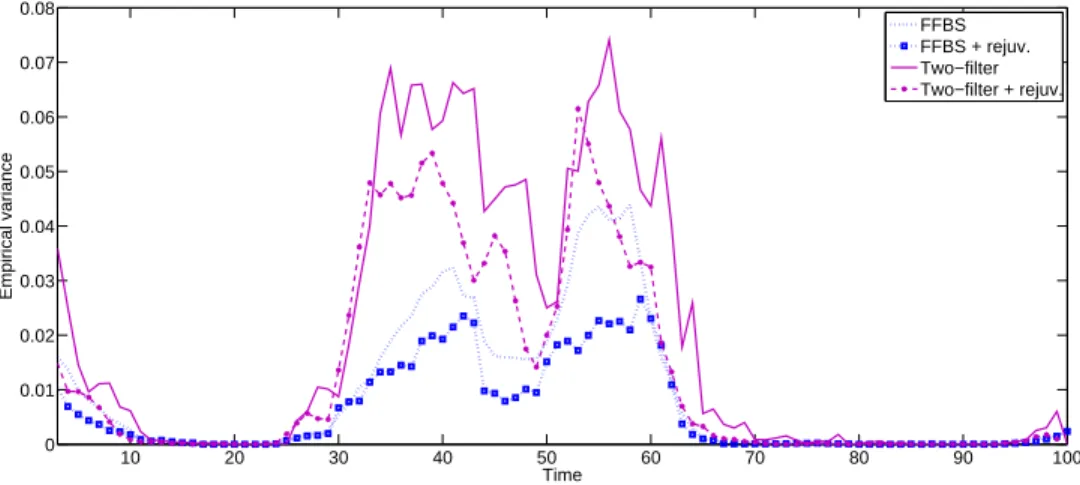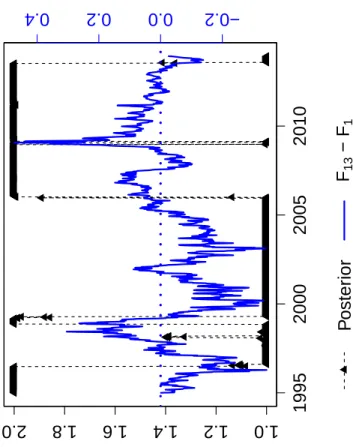Particle rejuvenation of Rao-Blackwellized Sequential Monte Carlo smoothers for Conditionally Linear and Gaussian models
Texte intégral
Figure




Documents relatifs
To determine the proper number of particles experimentally, we plotted the average accuracy over 30 experiments with varying the number of particles and problem difficulty in
A methodological caveat is in order here. As ex- plained in §2.1, the acoustic model takes context into account. It is theoretically possible that the neural network learnt
Reconstruction of Compressively Sampled Ultrasound Images Using Dual Prior Information.. Alin Achim, Adrian Basarab, George Tzagkarakis, Panagiotis Tsakalides,
Many examples in the literature show that the EI algorithm is particularly interesting for dealing with the optimization of functions which are expensive to evaluate, as is often
embryonal sarcoma with unusual features arising within mesenchymal hamartoma of the liver: report of a case and review of
• The initial motivation of quasi Monte Carlo (QMC) is to use low discrepancy vectors instead of unconstrained random vectors in order to improve the calculation of integrals via
In Figure 2, we show a comparison (based on the Boston Housing data set explained in Section 6.1) between two Sequential Monte Carlo algorithms, using a product model q p and a
The latter, also called particle filtering, focuses on sampling in state space models based on sequential data, while the former’s initial goal is to enhance Monte Carlo efficiency

